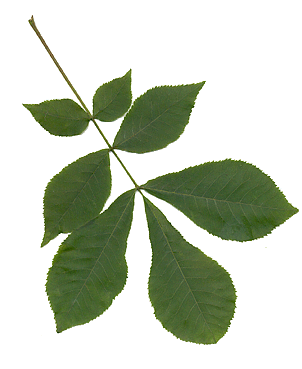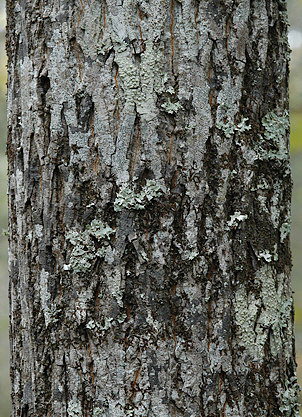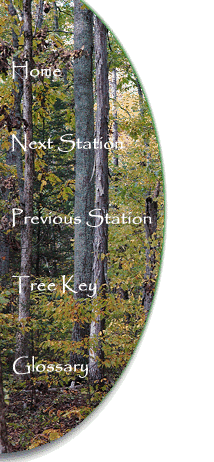| |
|
| |
 |
| |
Bitternut Hickory Leaf |
Identification:
The leaves are
6 inches to 10 inches in
length, and are alternate,
pinnately
compound, shiny above and paler
and lightly hairy below. Each leaf has 7 to 11 sessile
leaflets. The
margins of the leaflets are
serrate. The
rachis is slender and slightly hairy.
Compare these leaves to those of the Shagbark Hickory, and to those
of the White and Blue Ashes. Note the
alternate pattern of the
leaves and branches, which distinguishes this tree from the ashes,
which are opposite.
| |
|
 |
|
|
Bitternut Hickory Bark |
The bark of the Bitternut Hickory is
a slate gray. In older trees the bark becomes shallowly
fissured with interlacing ridges.
The twigs of the Bitternut Hickory
are gray-brown and lenticellate.
Other Uses
and Lore:
The wood of the bitternut hickory has been used for
tool handles and agricultural implements. It is also used in the
curing process for curing hams and bacon. Early settlers
pressed an oil from the nut, which some used as a remedy for
rheumatism, while others used it to fuel crude lamps.
The nuts are eaten by a wide variety of wildlife,
including wild turkey, squirrels, small rodents, raccoon, and
white-tailed deer.
The
Trail From Station Ten to Station Eleven
 |
|
Along the South Part of the
Trail |
From Station
Ten, the trail traverses the bottomland area that borders the West
Fork of the Stones River. There are many large trees here, and
it is a good area to look for perched Barred Owls. They are
sometimes active during the day, particularly the late afternoon.
Station Eleven is a only a short distance, and is on the left side
of the trail.
|

